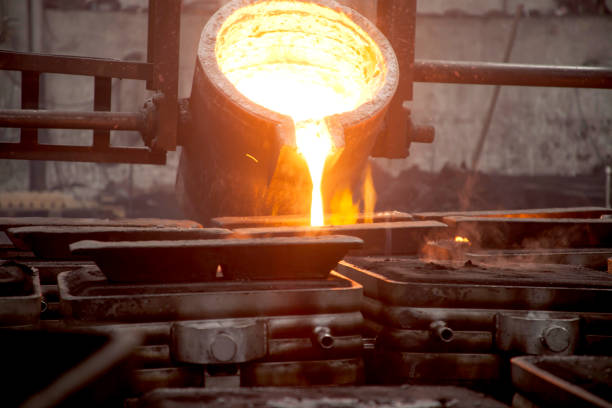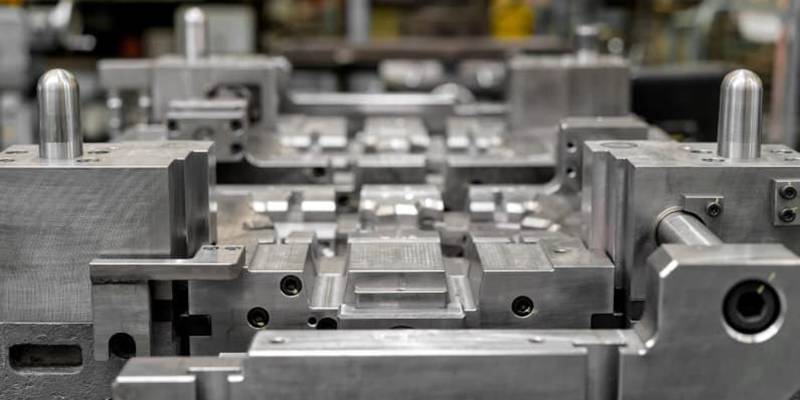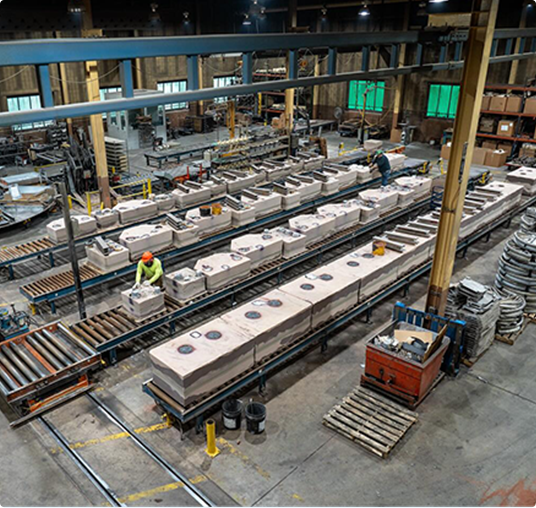How to Leverage Aluminum Castings for Lightweight Manufacturing Solutions
Wiki Article
A Comprehensive Overview to the Conveniences of Making Use Of Aluminum From Foundries
Aluminum from foundries provides a series of advantages that make it a useful material across different industries. Its lightweight nature contributes to cost savings in transportation and improves overall product effectiveness. Additionally, aluminum's remarkable resistance to corrosion guarantees long life and minimizes maintenance demands. The advantages prolong past these elements. Recognizing the full range of aluminum's residential or commercial properties and their effects can expose also deeper understandings into its role in modern-day applicationsComprehending Foundry-Grade Aluminum
Foundry-grade aluminum is a specialized product renowned for its exceptional residential or commercial properties and versatility in numerous applications. This kind of aluminum is commonly created with controlled spreading processes, enabling specific control over its composition and microstructure. Therefore, foundry-grade aluminum exhibits premium mechanical buildings, including outstanding stamina and corrosion resistance, making it appropriate for requiring environments.Along with its architectural honesty, foundry-grade aluminum can be quickly formed into complicated forms, supplying designers and designers with flexibility in their jobs. Its ability to endure heats even more enhances its charm for industries such as vehicle and aerospace, where efficiency and dependability are vital. Foundry-grade aluminum is typically recyclable, contributing to sustainability efforts. By utilizing this material, producers can achieve a balance of performance, sturdiness, and environmental obligation, making foundry-grade aluminum a recommended choice for a large range of industrial applications.
Lightweight Properties and Their Benefits
The light-weight properties of aluminum from foundries supply considerable advantages in various applications. Decreased transportation expenses can be accomplished because of the lower weight, allowing for extra reliable logistics. In addition, the boosted item efficiency obtained from making use of lighter materials can cause boosted capability and individual experience.Lowered Transportation Prices
Aluminum's light-weight residential or commercial properties considerably add to minimized transportation prices, making it an attractive option for various industries. When contrasted to larger products such as steel, aluminum permits lighter lots, enabling vehicles to carry more products successfully. This decrease in weight can cause significant financial savings on gas consumption, as lighter lorries require much less power to run. Additionally, the capability to transfer bigger amounts without exceeding weight limitations enhances logistical effectiveness. Industries such as aerospace and vehicle benefit specifically from these advantages, as they can maximize delivery processes and decrease general functional costs. Utilizing aluminum from foundries not just enhances transportation however also supports sustainable methods by minimizing carbon emissions linked with hefty freight transportation.Improved Item Performance

Corrosion Resistance: A Trick Benefit
Aluminum from foundries uses phenomenal corrosion resistance, mainly as a result of its natural oxide layer. This protective layer types when aluminum is exposed to air, protecting against more oxidation and degeneration. Because of this, items made from aluminum can show long-lasting sturdiness, making them suitable for various applications in challenging environments.Natural Oxide Layer
The natural oxide layer that develops on aluminum surface areas functions as a crucial protection versus rust. This thin, transparent barrier creates when aluminum is revealed to oxygen, effectively protecting the underlying metal from numerous ecological aspects. The oxide layer is both secure and sturdy, ensuring that aluminum maintains its integrity gradually. Unlike other steels that may corrode more rapidly, aluminum's oxide layer stops the formation of rust and various other destructive substances. This particular is specifically helpful in markets where materials are exposed to moisture or extreme chemicals. Subsequently, the visibility of the all-natural oxide layer adds significantly to the long life and integrity of aluminum items, making it a recommended option in countless applications.Long-lasting Longevity
While numerous materials catch the wear and tears and environmental exposure, the long-lasting toughness of aluminum stands apart, mostly as a result of its extraordinary deterioration resistance. This resistance is credited to a natural oxide layer that bases on its surface area, properly protecting the metal from moisture, chemicals, and various other harsh representatives. Unlike steel, which can rust and deteriorate with time, aluminum continues to be intact, making it excellent for various applications, including building and construction, auto, and marine industries. Its lightweight nature, integrated with durability, enables minimized maintenance prices and longer lifespans in products. Aluminum from foundries provides a sustainable alternative that reduces substitute regularity, adding to both financial performance and environmental obligation. This durability boosts its allure in numerous applications.The Recyclability of Aluminum
Provided its extensive use throughout various sectors, the recyclability of aluminum provides a significant ecological advantage. Aluminum can be recycled indefinitely without losing its buildings, making it a prime candidate for lasting methods. The recycling procedure have a peek at these guys calls for only a portion of the energy needed to generate new aluminum from resources, decreasing greenhouse gas exhausts and conserving natural sources. Furthermore, the recycling of aluminum diverts waste from garbage dumps, contributing to more reliable waste administration systems.
Cost-Effectiveness in Numerous Applications
Countless sectors recognize aluminum's cost-effectiveness, making it a preferred choice for numerous applications. Its light-weight nature lowers transport prices and power intake, substantially adding to overall savings. In manufacturing, aluminum's malleability permits efficient shaping and creating, lessening waste throughout production.Aluminum's resilience assurances durability, which minimizes the requirement for frequent substitutes and maintenance. The material's deterioration resistance also equates right into reduced lasting prices, as it requires less safety layer and care contrasted to various other metals.

Sustainability and Ecological Influence
Aluminum's cost-effectiveness is complemented by its sustainability and favorable environmental effect. The steel is very recyclable, with around 75% of all aluminum generated still in usage today. This recyclability considerably decreases the demand for raw material removal, decreasing energy intake and linked greenhouse gas discharges. Shops play a crucial function in the reusing procedure, using sophisticated innovations to repurpose scrap aluminum successfully.Additionally, aluminum production from recycled product takes in just around 5% of the power needed for key aluminum production. This substantial energy financial savings equates to reduce carbon footprints, aligning with international sustainability goals. Additionally, aluminum's light-weight nature enhances gas effectiveness in transport applications, further adding to reduced discharges throughout its lifecycle. As industries increasingly focus on sustainable methods, aluminum from foundries becomes a beneficial selection, advertising environmental stewardship while sustaining financial growth.
Often Asked Questions
What Are the Common Applications of Foundry-Grade Aluminum?
Typical applications of foundry-grade aluminum include automobile components, aerospace parts, machinery, building and construction products, and durable goods. Its lightweight nature, corrosion resistance, see page and exceptional mechanical properties make it suitable for diverse sectors and making procedures.Just How Is Foundry-Grade Aluminum Produced?
Foundry-grade aluminum is generated via melting aluminum scrap or ingots, followed by alloying with various other metals. The liquified aluminum is after that cast into molds, allowing it to strengthen into different forms for diverse applications.What Are the Safety Considerations When Functioning With Aluminum?
Safety considerations when functioning with aluminum include proper air flow to prevent inhaling dust, use individual safety devices to stop skin call, and understanding of fire dangers related to molten aluminum during handling and spreading.How Does Foundry-Grade Aluminum Contrast to Various Other Steels?
Foundry-grade aluminum uses a premium strength-to-weight proportion contrasted to lots of steels, together with exceptional deterioration resistance and thermal conductivity. Its convenience and capacity to be quickly shaped make it a preferred choice in various applications.What Upkeep Is Needed for Aluminum Products?
Aluminum items need very little upkeep, largely involving regular cleansing to avoid oxidation and dust build-up (Metal Castings). Protective layers might boost toughness, their website while routine inspections can guarantee structural integrity and resolve any kind of wear or damages quicklyFoundry-grade aluminum is a customized product renowned for its phenomenal residential or commercial properties and convenience in different applications. Leveraging lightweight buildings, aluminum enhances product efficiency across various applications. Unlike steel, which can corrosion and break down over time, aluminum continues to be undamaged, making it perfect for different applications, consisting of building, vehicle, and aquatic markets. Aluminum production from recycled material consumes just about 5% of the power needed for primary aluminum manufacturing. Foundry-grade aluminum is created with melting aluminum scrap or ingots, complied with by alloying with various other metals.
Report this wiki page